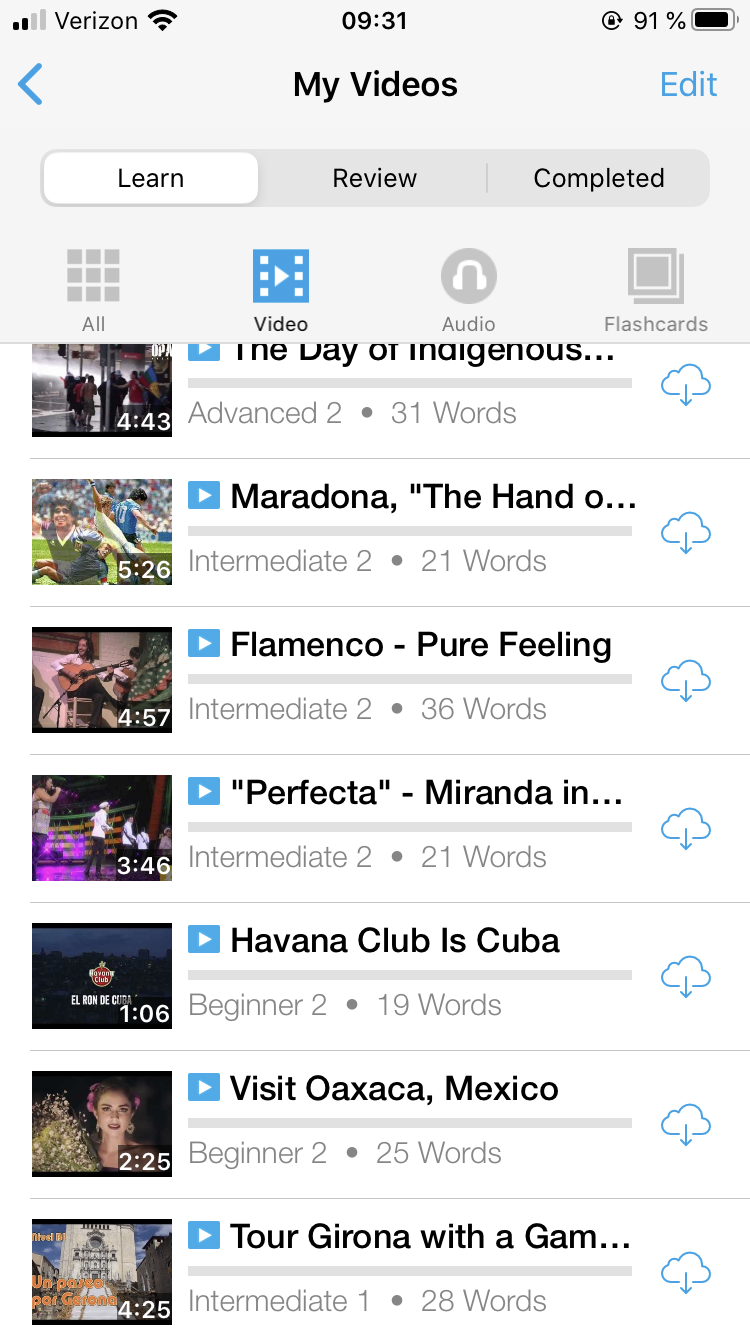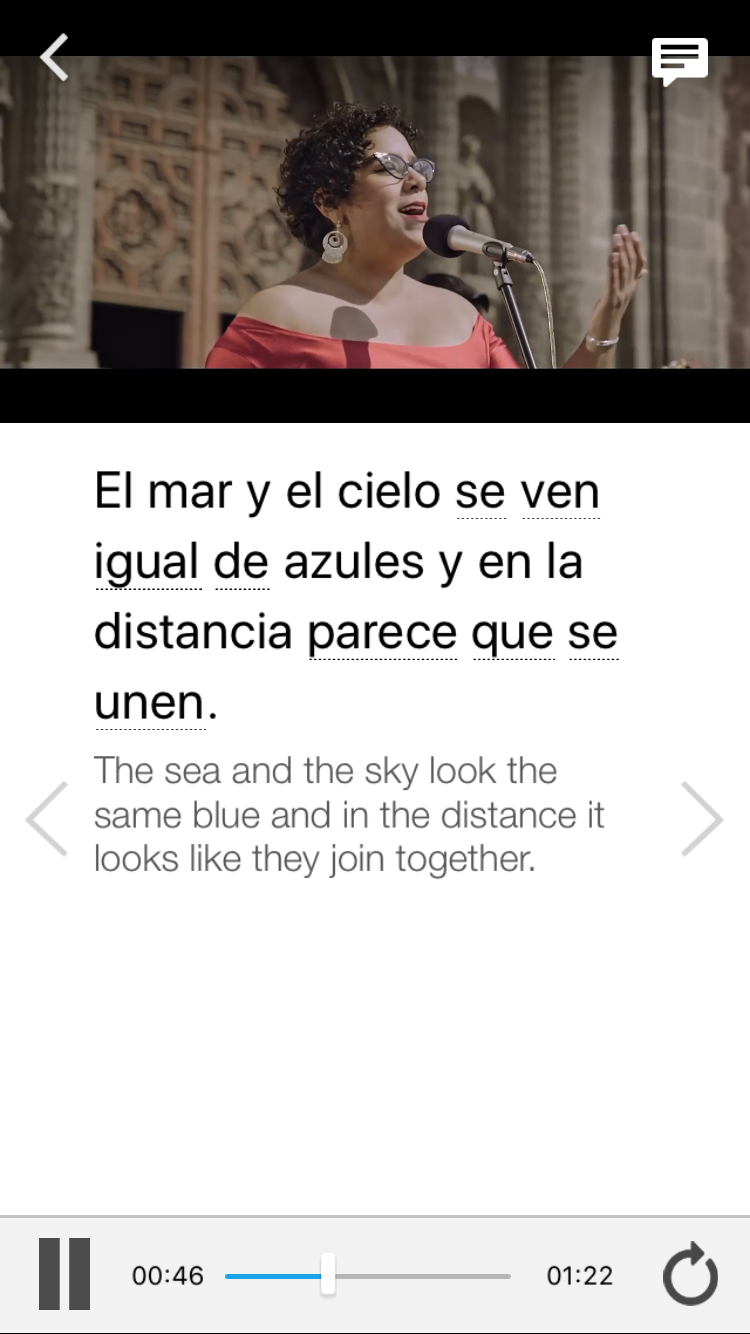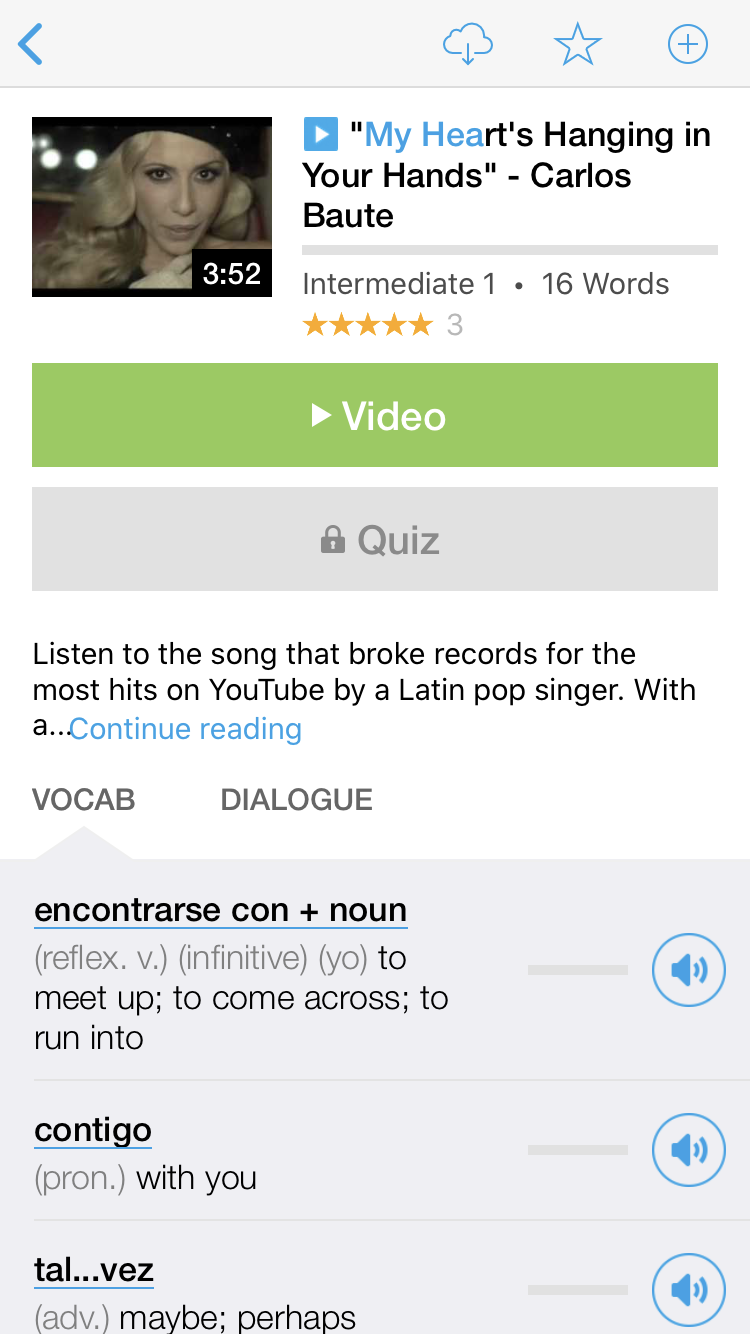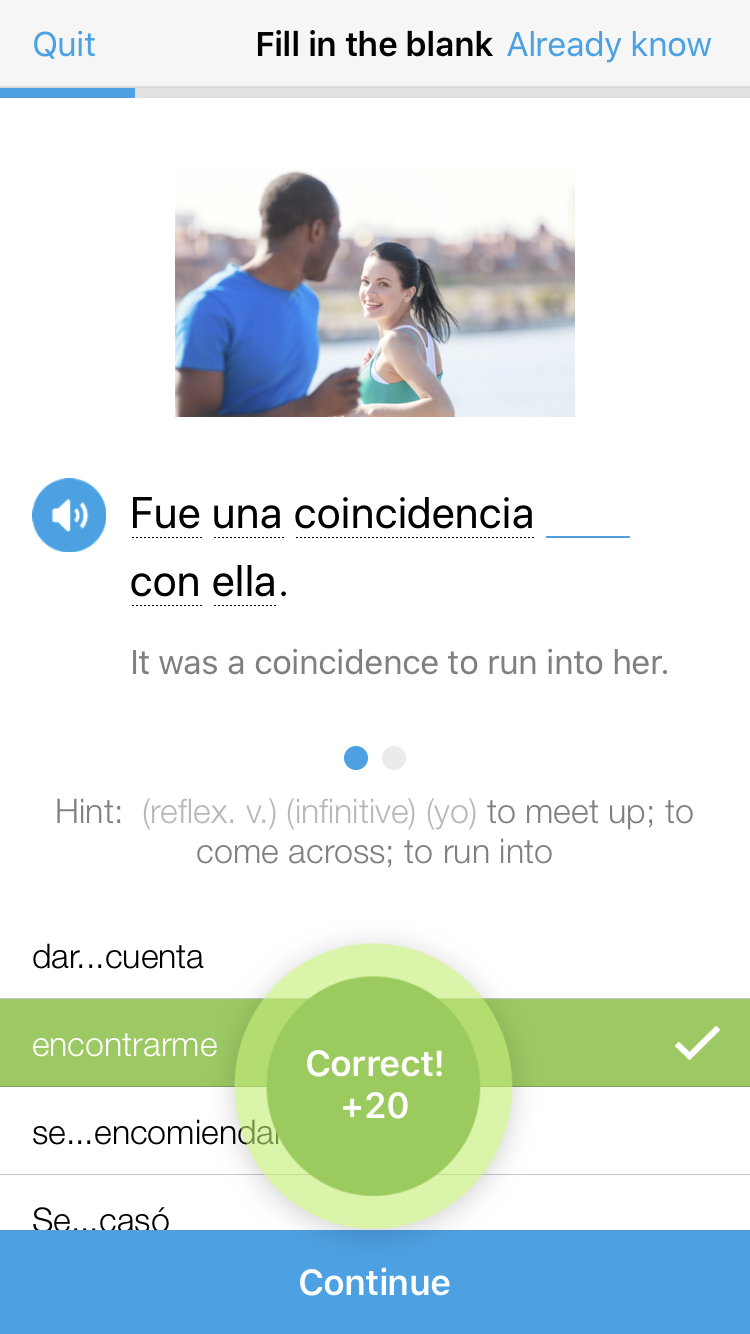
Sometimes it can feel like no matter how often we drill new Spanish words, they still slip away.
With these five simple study tactics, you can cement Spanish vocabulary into your memory quicker and more efficiently.
In no time, you’ll have memorized tons of new Spanish words, giving you a leg up in conversation and pushing you further down the road to fluency.
Contents
Download:
This blog post is available as a convenient and portable PDF that you
can take anywhere.
Click here to get a copy. (Download)
1. Schedule Spanish Practice into Your Calendar
It seems kind of obvious, right? If you want to learn something new, practice makes perfect. Whether it’s a sport, an instrument or a new language like Spanish, this rule holds true across each. Bestselling author Malcolm Gladwell popularized the idea of it taking 10,000 hours to master a skill, a concept he explores in more detail in his book “Outliers.”
Thus, the easiest way to learn and memorize a new language is to practice every day. If you’re currently in school or taking a class, this will be easy to do. But if you’re studying on your own, you’ll need to be very disciplined about your practice.
Think of it this way: if you don’t create time to practice, it won’t happen. Everyone is busy with so many different things every day—it’s up to you to prioritize memorizing Spanish words. Specifically, this means adding time to practice into your schedule, as a non-negotiable calendar event.
How exactly you spend that time is up to you. Try to find vocabulary drills that work well with your lifestyle (do you prefer to drill words in a comfy chair at the end of the day, or do you want to squeeze in some practice in the office between meetings?). Here are some ideas for how to spend your Spanish vocabulary practice time:
- Write down sentences using the new words
- Download a flashcard app so you can drill new words anytime, anywhere
- Talk out loud to specifically practice a set of new words
Practicing every day will allow you to actually use the language, get more familiar with it and learn it faster. Creating personalized flashcards with an app like FluentU can make it more convenient to practice daily.
Scientists have also found that superior performance is linked to practice beyond the point of mastery. Therefore, if you’re serious in your pursuit of how to memorize Spanish words (and learning the language in general), you’d better practice.
2. Incorporate the Process of Chunking
Many language retention/learning studies show that one simple method for learning a new language quickly is to use a technique called “chunking.”
Chunking involves taking multiple small pieces of information and putting them together to create a larger piece (“chunk”) of information. Doing this makes it possible to remember more information as a whole. In this case, we can learn Spanish words by “chunking” them into larger phrases.
The more phrases you learn, the greater your ability to put together complete ideas.
The words you choose for your “chunks” can come from the lists of vocabulary words you’re studying. For maximum memorization benefits, create a chunk that includes both a verb and a noun. Seeing how these words work together will help with overall comprehension when learning a new language.
The “chunks” might include something like these two phrases:
- Que trabajo tenías (What job did you have)
- Cuando eras adolescente (When you were a teenager)
With the resulting sentence turning into:
¿Qué trabajo tenías cuando eras adolescente? (What job did you have when you were a teenager?)
When creating chunks, it may be helpful to plug your complete sentence into a translation app, to make sure you’ve captured the right verb tenses throughout the sentence. Without double checking, you risk learning chunks that don’t actually agree with each other, which can hurt your progress.
By understanding the parts of a sentence separate of the sum of the two combined, you increase your overall understanding of how to use the Spanish language. In this case, you not only know the translation of one sentence but now have also learned two new phrases to use in other circumstances.
Additionally, breaking up a sentence into chunks makes it easier to memorize (in the short term) and to comprehend (in the long term).
3. Learn Usage, Not Just Definitions
Another way to learn how to memorize Spanish words is to understand how they’re actually used in context.
Think of it this way. When you just memorize a Spanish word paired with its definition or translation, you’re sort of learning it in a vacuum. The next time you encounter that word, you’ll have to remember it exactly as you learned it, which can be very difficult.
But if you learn how to use a new word—whether it’s formal or informal, what situations you’re likely to encounter it in, variations or synonyms for it—you’re inserting it in your existing bank of Spanish knowledge and it’ll stick much more easily in your long-term memory.
One more tip! Besides using context to figure out how to memorize Spanish words, you could also dissect prefixes, suffixes or the root of a word, which may be similar to the same word in your native language. For example, computadora is Spanish for computer. You can use the computa- part, to take a guess at what the word means in the language you’re less familiar with.
4. Try the Goldlist Method
You may know that writing things down is linked to tactile memory. If you write down your new Spanish words, you’ve got a better chance of remembering them next time.
This is where the Goldlist method for memorization comes in. The idea is to help your memory naturally retain information through a process of repetition.
Here’s how it works:
- First, write down at least 25 of the Spanish words you’re trying to learn, alongside their meaning, definition or some type of description in your native language. To help with visualization and organization, use a lined sheet of notebook paper.
- After writing your 25 vocabulary words, read them out loud, mindfully, but without forcing yourself to remember them just yet. Writing and reading these words aloud shouldn’t take more than 20 minutes. Make sure to go through this exercise in 20-minute chunks (there’s that word again!), to avoid straining your long-term memory.
- You can do as many 25-word chunks per day as you want, as often as you want. As a best practice, however, aim for about 10 sessions or 250 words as a maximum, taking a 10-minute break between each one.
- After two weeks, go back to the list you made and read the first 25 words you wrote down. This specific two-week number is important, because it allows short-term memory to fade, and helps to ensure that information has been committed to long term memory.
- Read through your list and mark off the items that you’ve remembered. A study by German psychologist Hermann Ebbinghaus found that you’ll likely remember up to 30 percent of these words (about eight total), which is nothing to scoff at, considering the minimal effort you put into memorizing them.
- Next, rewrite your list again using the 17 (or so!) words you didn’t remember. Do this up to 10 times, with a two-week break in between, and you’ll have certainly learned all the words on your list.
To make it easy and to help your brain connect the dots, consider grouping your words into themes, like food-related vocabulary words or color vocabulary words.
5. Learn New Words Through Music
If you’re a musical learner, learning a new language through song may be the easiest method for how to memorize Spanish words.
Even if they’re silly, songs are catchy, and they’ll help you to get the hang of your vocabulary fast. The rhyme schemes and repetition will support your memory much better than rote memorization of new words. You might even opt to choose a popular song’s Spanish version that you already know the meaning of in English.
There are several music-oriented websites where you can learn Spanish songs.
Don’t forget to look up the lyrics, too, so you can absorb new words visually and aurally!
6. Connect Different Words Using Mind Maps
To help you create connections between different words, try creating mind maps to visually organize and connect Spanish vocabulary. Start with a central theme or word, such as “food” or “family,” and branch out by adding related words or subcategories.
Use colors, images, and connections to reinforce associations between words. For instance, if your central theme is “food,” you might branch out with subcategories like “fruits,” “vegetables,” “meat,” etc., and further expand each category with specific Spanish words.
Mind maps engage your visual memory and help establish connections, making it easier to recall words when needed.
You can put your mindmaps on your walls at home or keep them with you at work so you can always be reviewing the vocabulary whenever you have a spare moment.
7. Actively Use New Words in Context
Immerse yourself in the language by actively using Spanish words in various contexts. Engage in conversations, watch Spanish movies or TV shows, read books, listen to podcasts, or follow social media accounts in Spanish. Use the words you’re learning in sentences and contexts that are relevant to you.
Practice writing short stories or sentences using the new vocabulary. Incorporating words into real-life situations enhances retention by associating the words with practical experiences.
Additionally, consider finding a language exchange partner or joining language groups where you can practice speaking and reinforce your vocabulary through conversation.
Try to put new words into practice in whatever way you can as soon as possible after learning them, to help with the memorisation process.
There are several methods for learning how to memorize Spanish words easily. Finding a method that aligns with your preferred learning style can make the process less of a bane, and more fun overall. Find the strategy that works for you and commit to it. Make time in your schedule to practice Spanish, and you’ll become a better Spanish speaker in no time.
Download:
This blog post is available as a convenient and portable PDF that you
can take anywhere.
Click here to get a copy. (Download)
And One More Thing…
If you’ve made it this far that means you probably enjoy learning Spanish with engaging material and will then love FluentU.
Other sites use scripted content. FluentU uses a natural approach that helps you ease into the Spanish language and culture over time. You’ll learn Spanish as it’s actually spoken by real people.
FluentU has a wide variety of videos, as you can see here:

FluentU brings native videos within reach with interactive transcripts. You can tap on any word to look it up instantly. Every definition has examples that have been written to help you understand how the word is used. If you see an interesting word you don’t know, you can add it to a vocab list.

Review a complete interactive transcript under the Dialogue tab, and find words and phrases listed under Vocab.

Learn all the vocabulary in any video with FluentU’s robust learning engine. Swipe left or right to see more examples of the word you’re on.

The best part is that FluentU keeps track of the vocabulary that you’re learning, and gives you extra practice with difficult words. It’ll even remind you when it’s time to review what you’ve learned. Every learner has a truly personalized experience, even if they’re learning with the same video.
Start using the FluentU website on your computer or tablet or, better yet, download the FluentU app from the iTunes or Google Play store. Sign up by November 28th to receive a 60% discount with our Black Friday sale!



